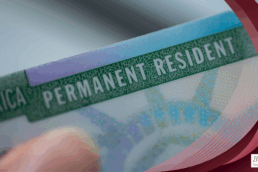One way for foreign medical graduates (FMGs) to ensure their legal stay in the United States is through obtaining permanent residence, also known as a green card. There are several different types of these petitions. They are EB-1 Extraordinary Ability, EB-2 Labor Certification Application and EB-2 National Interest Waiver.
EB-1 Extraordinary Ability
A foreign medical graduate who can prove that he or she has risen to the top of their field may be eligible for EB-1 extraordinary ability status. The requirements for EB-1 status are similar to those necessary for O-1 status, but the EB-1 is generally more difficult to acquire. The FMG must have been the recipient of a major, internationally recognized award or fulfill at least three of the following criteria:
• Receipt of nationally/internationally recognized prizes or awards for excellence in their area of expertise.
• Membership with professional associations requiring outstanding achievements of their members, as judged by national/international experts.
• The physician has been the subject of articles in the major media.
• The physician has participated on a panel as a judge of the work of others relating to their work.
• The physician has made original scientific or scholarly contributions of major significance.
• The physician has written scholarly articles that have been published in professional journals or other major media.
• The physician has worked in a critical capacity for an organization with a distinguished reputation in the field of medicine.
• The physician has commanded a high salary or other compensation.
The chief advantage of this visa category is that the physician can self-sponsor, meaning they do not need an employer to sponsor them.
EB-2 Labor Certification Application
The EB-2 labor certification petition (or PERM) is the second preference employment category. This allows individuals of exceptional ability and individuals who are members of advanced degree professions to obtain a green card.
There are generally three steps to obtaining a green card through the EB-2 category. They are as follows:
1. Testing of the U.S. job market
– As of March 28, 2005, the U.S. Department of Labor (DOL) implemented a new procedure for applying for permanent labor certification – the Program Electronic Review Management (PERM) process.
– The PERM process requires the petitioning employer to conduct a series of recruitment activities to test the current U.S. job market before filing the application. If no qualified U.S. worker is found through this process, the employer can then submit the PERM labor certification.
– This first step takes roughly 12 to 15 months: three to six months for recruitment, plus nine months for the Department of Labor processing.
2. Filing of a preference petition with USCIS
– Once the PERM application has been certified by the Department of Labor, a preference petition can be filed with United States Citizenship and Immigration Services (USCIS).
– The preference petition requires proof of PERM certification, employer information, proof of advanced degree, etc. This step is filed with USCIS based on the employer’s location.
– Regular processing for this step takes 12 to 18 months depending on the location of the service center. However, premium processing is available for an additional $1,225 government fee, which cuts the processing time down to 15 calendar days.
3. Visa Processing or Adjustment of Status
– Once the preference petition has been approved by USCIS, the applicant may request the physical creation of the green card. This can be done while the applicant is either in the U.S. (known as Adjustment of Status) or in the FMG’s home country (known as Visa Processing).
– Adjustment of Status typically takes about six to 12 months processing time, depending on the jurisdiction. Visa Processing takes about the same time.
EB-2 National Interest Waiver
There is also a subset of the EB-2 category, known as the National Interest Waiver. This states that the requirement of the labor certification is waived if the petitioner can prove that granting the EB-2 petition would be in the national interest of the United States. The FMG must then agree to work for a period of time in a designated underserved area.
There are several requirements to qualify for a national interest waiver. They are:
• The physician must agree to work full-time in a clinical practice. The required period of work is typically five years.
• The physician must work in primary care (such as a general practitioner, family practice practitioner, pediatrician, gynecologist, or physiatrist) or be a specialty physician.
• The physician must serve in either a Health Professional Shortage Area (HPSA), Mental Health Professional Area (MHPSA – for psychiatrists only), a Medically Underserved Area (MUA), a Veterans Affairs facility, or for specialists in a Physician Scarcity Area.
• The physician must obtain an attestation, which is a statement from a federal agency or a state department of health that has knowledge of your qualifications as a physician and that states your work is in the public interest.
Related Posts
October 7, 2025
DHS Plans Major Updates to Employment-Based Green Card Rules
September 25, 2025
What Is the Trump Gold Card? Requirements and Details
Ready to have Berardi on your side?
Whether you’re a business looking to hire or a professional hoping to relocate, immigration law can be complicated. But you don’t have to do it alone. Put our experience to work for you.


